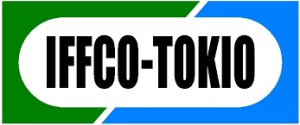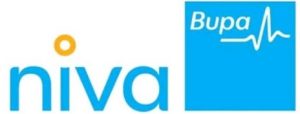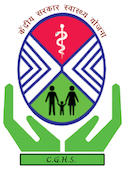How can Ayurveda help MND patients
Ayurvedic treatment is the only promising solution for the MND where we can expect some results for the disease. Ayurveda can help with following, with treatment-
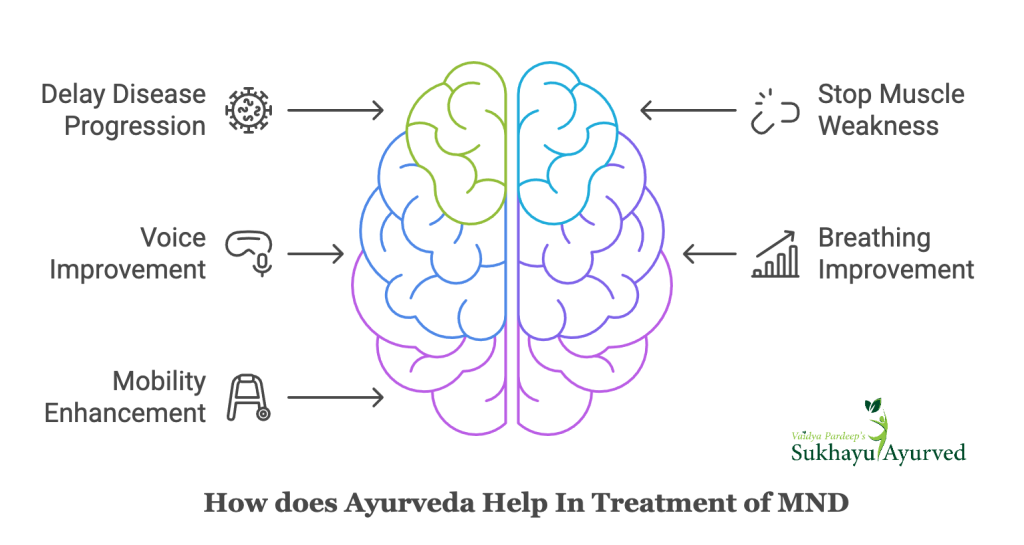
- Delay in the progress of the disease.
- The weakness of the muscles can be stopped.
- Improvement in voice.
- Breathing can improve.
- Walking and holding things improves significantly with Ayurveda’s treatment of MND.
Ayurveda about Motor Neuron Disease
Vata represents the nervous system. Not anatomically. These are more about the physiology of the nervous system more. So problems of the nervous system are mostly discussed and covered as Vata Vyadhi. The same is applicable in case of Motor Neurone Disease: Ayurvedic Treatment. But there is something more accurate with the theory of activities, which we follow at Sukhayu Ayurved for the complete treatment of motor neuron disease.
Here are a few characters of Vata, which are-
प्रवर्तकश्चेष्टानामुच्चावचानां
सर्वेन्द्रियाणामुद्योजकः
सर्वेन्द्रियार्थानामभिवोढा
सर्वशरीरधातुव्यूहकरः
सन्धानकरः शरीरस्य
प्रवर्तको वाचः
These are a few characters of the Vata. These describe more about the relation of the Vata dosha with motor neuron disease. As per the Sanskrit notion, the translation of the same is as follows-
- The initiation of every activity depends on the Vata. Motor commands fall under this activity of the Vata Dosha.
- The initiation of all motor activities.
- Guides to the movements.
- Binds the body together.
- Keeps the body intact.
- Responsible for Vata Dosha.
In case of MND, these all activities diminish. And this leads to all the symptoms of the motor neuron disease. The approach of ayurvedic treatment for MND is based on the same.
The Approach of Motor Neurone Disease: Ayurvedic Treatment
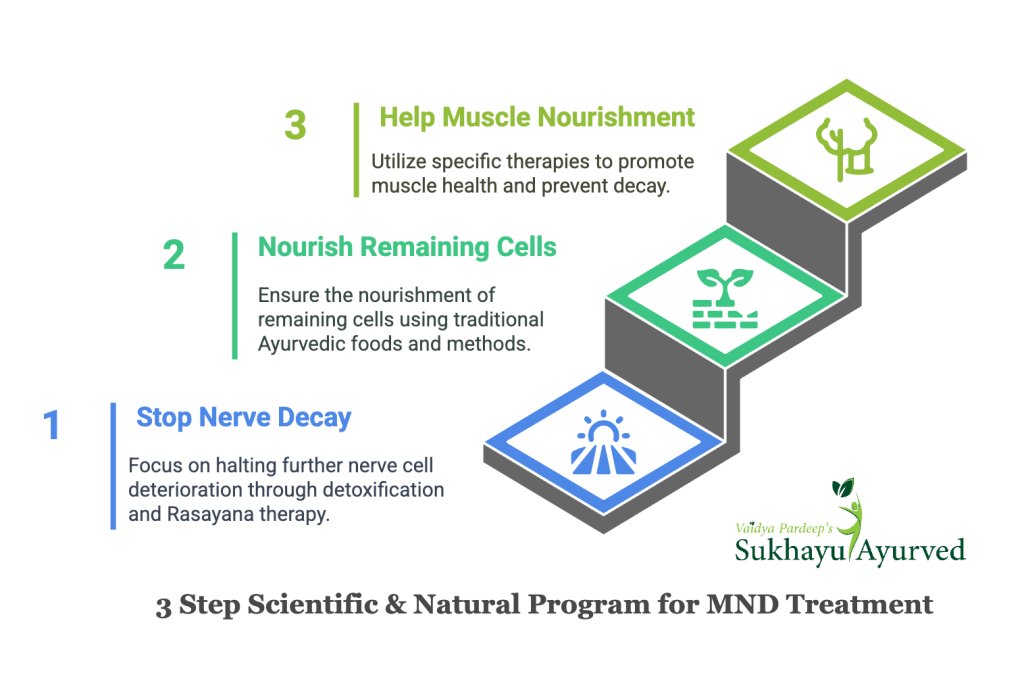
Bringing back the abovesaid activities is the key of the Motor Neurone Disease: Ayurvedic Treatment at Sukhayu Ayurved, under Vaidya Pardeep Sharma Ji. The main things we suppose to do with the treatment of MND are as follows-
- To stop the further decay of the nerve cells.
- Ensuring the proper nourishment of remaining cells.
- To help the nourishment of muscles.
The main aim of the treatment in the MND is to stop the progress of the disease and to ensure the decay of the body. Life is different from the disease. And MND challenges life and we believe to restore this at Sukhayu.
How do we follow this three-step treatment-
To stop the further decay of the nerve cells
For Motor Neurone Disease: Ayurvedic Treatment, we follow the two points approach for motor neuron disease.
Detoxification of body
The first thing is to remove the deep-seated toxins from the body. These toxins might be coming from the environment or might be there due to a “genetic” configuration of the body.
Panchakarma is the tool for this. We cannot do extensive panchakarma in the patients of the MND. Because the decay of the body is too much in the body of motor neuron disease. Therefore we use medicines and panchakarma very properly for Motor Neurone Disease: Ayurvedic Treatment.
Rasayana Therapy
Rasayana is the medicine of nourishment. These nourish the body deeply. These might be as simple as- Ashwagandha, Amala and Mulethi and complex combinations like Brahmarasayana or Chyawanprash. This all depends on the physicians to select the right medicine for the condition.
Ensuring the proper nourishment of remaining cells
Because of the decay of the body is speedy with MND and we need to nourish the body properly. Charak, comments wisely on this topic, he says while discussing the treatment of Vata Vyadhi-
सर्पिस्तैलवसामज्जसेकाभ्यञ्जनबस्तयः [१] ||१०४||
स्निग्धाः स्वेदा निवातं च स्थानं प्रावरणानि च |
रसाः पयांसि भोज्यानि स्वाद्वम्ललवणानि च ||१०५||
बृंहणं यच्च तत् सर्वं प्रशस्तं वातरोगिणाम् |१०६||
In the treatment guidelines, Charaka tells to use-
Ghee, Oils, Animal Fats and Bone marrow to nourish the body. These should be applied on the skin and can also be given orally and through Basti. The patient should be kept in a warm place. Sweet, salty and sour- foods that nourish the body, are recommended for Motor Neurone Disease: Ayurvedic Treatment.
Charaka had a vision and he knew about the treatment. The best thing with Sukhayu is – we follow Ayurveda As it is told by text under the supervision of Vaidya Pardeep Sharma
To Help the Nourishment of Muscles.
This step we can achieve with the earlier one. Bruhman chikitsa helps in the decay of the muscles and devastating. Along with medicines, panchakarma procedures like Navar Kizhi, help in achieving this.
To achieve these three steps which help in treating the motor neuron disease for this we follow a proper line of treatment of MND at Sukhayu Ayurved, Jaipur.
How does the Motor Neurone Disease: Ayurvedic Treatment at Sukhayu
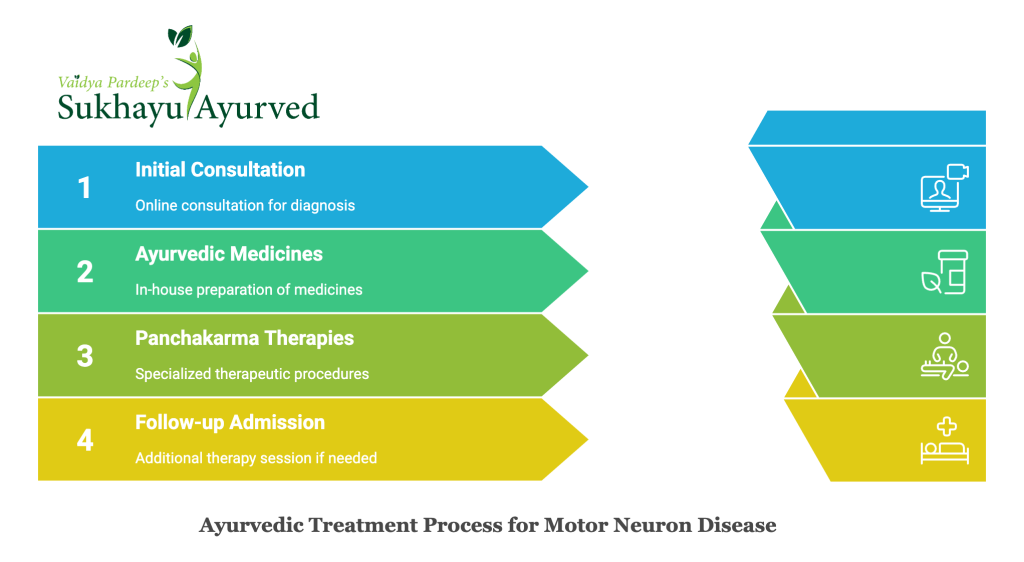
The Ayurvedic treatment for motor neuron disease at Sukhayu Ayurved, Jaipur goes in following way-
- This is an IPD-base treatment:
The patient needs to admit to the hospital for a period of time. The patient is admitted to the hospital for 3 to 4 weeks for once. And after a particular interval patient might need to admit again for 8 days. - Ayurvedic Medicines:
Ayurveda medicines remain to continue for longer times. Medicines we give to patients are prepared mostly in-house under the guidance of our Vaidyas. And all the medicines are ayurvedic and safe for long term use. - Panchakarma Therapies:
The admission is intended for the panchakarma alone. As discussed above- Basti, Navar Kizhi and other procedures are offered to patient.
The primary assessment of the patient is advised through online- VIDEO CONSULTATION. Vaidya Dr. Pardeep and Neetu need your documents before going for the consultation. We will share some details once you book an appointment.
This helps to make a primary diagnosis and to advise you to start the medicines after teleconsultation for Motor Neurone Disease: Ayurvedic Treatment.
HOPE is the main ingredient of any medicine.
An Overview of Motor Neurone Disease
Motor neuron disease is a group of medical conditions that eventually results in the loss of function of the nerves in the spine and brain. The problem happens because of the death of neurones. These are the nerves, which control muscles responsible for moving, breathing, speaking and swallowing. With time, this decay continues. And this leads to disability. Motor Neurone Disease: Ayurvedic Treatment can certainly help with motor neurone disease and you can defeat your disability. So let’s know each and everything about the disease so that we can make a better understanding of this condition.
Neurons are basic units of the nervous system. All messages move from brain to muscles in these cells. These are two types- Sensory and Motor. Motor Neurones are one, responsible to carry commands from brain. And Sensory carry senses. But here we are talking about motor neuron diseases and Ayurvedic treatment.
Motor neurons are of two types-
- Lower Motor Neuron: These take the message from the spinal cord to the muscles.
- Upper Motor Neuron: These are higher neurons, which connect brain to the spinal cord.
Motor Neuron Disease (MND) is something which impacts both sets of these neurons.
In another case with a problem with upper motor neurons, we know it as UMND.
Details About MND
Facts about Motor Neurone Disease
When disease impacts the set of lower motor neurons, it is – LMND and
The range of treatments may relieve a few symptoms and provide little improvement in the quality of life.
Motor neuron disease is a severe type of neurodegenerative disease.
It is rare, uncommon progressive neurological disorder.
Motor neuron disease may develop at any age. However, the symptoms mostly appear after the age of 40 -50 years.
A person’s risk of developing motor neuron disease in his/her lifetime is 1 in 300.
The highest incidence of the disease occurs between the age of 50 to 70
15% of people suffering from motor neuron disease eventually develops the signs of frontotemporal dementia
Females are more likely to develop this condition in comparison to males.
The cause of most of the motor neuron disease is unknown. Some motor neuron diseases are inherited.
In about 90% of cases, there is no family history. In only 10% of the occurrence of motor neuron disease is inherited
The most common type of motor neuron disease is amyotrophic lateral sclerosis.
The progress of the disease significantly varies from one person to another.
Most of the people suffering from motor neuron disease live not more than 22-48 months after the symptoms appear.
Only five to ten percent of people suffering from motor neuron disease may live for ten years or more if the proper support system is given.
To date, western medicine has no cure for motor neuron disease.
Types of Motor Neuron Diseases
Motor neuron diseases are of various kinds.
Based on the neuron affected and on the fact that MND is hereditary or not, it is of following types:
ALS (Amyotrophic lateral sclerosis) –
It is also known as Lou Gehrig’s disease. It is one of the commonest motor neuron disease that affects both upper and lower motor neuron. This means it affects the neuron in the brain and spinal cord. ALS affects the muscles of the limbs, mouth, and respiratory system. The patients with ALS on average live not more than 3-5 years. However, with supportive care, the patient me live to 10 or more years.
Primary lateral sclerosis
This is a type of motor neuron disease that affects the neurons of the brain. It advances slowly in comparison to ALS. It is not a fatal disease but does affect the quality of life. The type of primary lateral sclerosis that affects the children is juvenile primary lateral sclerosis.
Progressive Muscular Atrophy
It affects the lower motor neurons in the spinal cord. This disease leads to slow and gradual wasting of the muscles of arms, legs, and mouth.
Progressive bulbar palsy
It is a motor neuron disease that involves the brain stem. It also affects the people who have ALS. Progressive bulbar palsy results in choking spells and difficulty in speaking swallowing and eating.
Spinal muscular atrophy
spinal muscular atrophy is an inherited disease that affects the children. All types of spinal muscular atrophy is the result of genetic change known as SMA1. It is of four types:
Type 1 or Werdnig-Hoffmann disease
It starts by the age of 6 months. Children suffering from it cannot hold up their head or sit. They have weak muscle tone, trouble swallowing, poor reflexes, and difficulty in breathing.
Type 2
It starts between 6 and 12 months. Kids suffering from it can sit, but cannot walk alone or even stand without support. They may have trouble breathing.
Type 3 or Kugelberg-Welander disease –
It begins between ages 2 and 17. It affects activities such as walking, running, standing, and climbing stairs. Kids with it may have a curved spine. In addition, they may have shortened tendons or muscles around their joints.
Type 4
This type starts after age 30. People with it may have muscle weakness, twitching, shaking, or breathing problems. It mainly affects the muscles of the legs and arms.
Symptoms of Motor Neuron Diseases
Almost all Motor neuron diseases share similar symptoms. However, their progress may vary in severity and speeds.
Generally, motor neuron diseases progress in three stages – early stage, middle stage, and advantage.
The symptoms of the early stage of motor neuron disease
- A weakening grip that makes it hard to hold or pick things
- Muscle cramps pains and twitches
- Fatigue
- Slurred speech
- Weakness in limbs
- Stumbling
- Clumsiness
- Difficulty swallowing
- Trouble in breathing
- Shortness of breath
- Inappropriate emotional responses (crying or laughing)
These symptoms begin in one of the following areas:
- Respiratory system
- Mouth
- Legs and arms
The early stage of motor neuron disease develops slowly and depends on the affected part of the body.
Symptoms of Middle stage of motor neurone disease
In the middle stage of MND, the symptoms of the early stage become more severe. Besides the patient also experiences:
- Muscle shrinkage
- Difficulty in moving
- Joint pain
- Difficulty in swallowing that leads to drooling
- Uncontrollable yawning leading to jaw pain
- Changes in personality
- Changes in an emotional state
- Difficulty breathing
50 % of patients with ALS develop language and memory problems, and around 12 to 15% of patients develop dementia. Insomnia and depression develop in some people.
Symptoms of the advance stage of motor neuron disease
As motor neuron disease advances, the patient is unable to move, breathe, or eat. The condition becomes life-threatening. In most of the cases, the difficulty in breathing results in death.
Accordion title 1
This is a placeholder tab content. It is important to have the necessary information in the block, but at this stage, it is just a placeholder to help you visualise how the content is displayed. Feel free to edit this with your actual content.
Accordion title 2
This is a placeholder tab content. It is important to have the necessary information in the block, but at this stage, it is just a placeholder to help you visualise how the content is displayed. Feel free to edit this with your actual content.
What Causes Motor Neuron Disease
About 90% of motor neuron disease happens randomly. The exact cause is unknown. 10% of motor neuron disease is believed to be hereditary.
Studies note that toxic genetic viral and environmental factors may play a role in the development of motor neurone disease.with your actual content.
How Motor Neuron Disease Occurs
Motor neurons are nerve cells that send electrical signals to the muscles and controls skeletal muscle activities such as speaking, reading, walking, and swallowing. Degeneration of motor neuron cells affects the ability of the muscles to function. The muscles gradually weaken, waste away, and there is a progressive loss of mobility along with difficulty in swallowing breathing and speech.
The most common cause of this unwanted progress is- damage to DNA. Which appear all of a sudden. Or things can run in families.
We need to look at the Ayurvedic perspective about the disease and this has helped at Sukhayu Ayurveda to provide the best ayurvedic treatment of MND.




